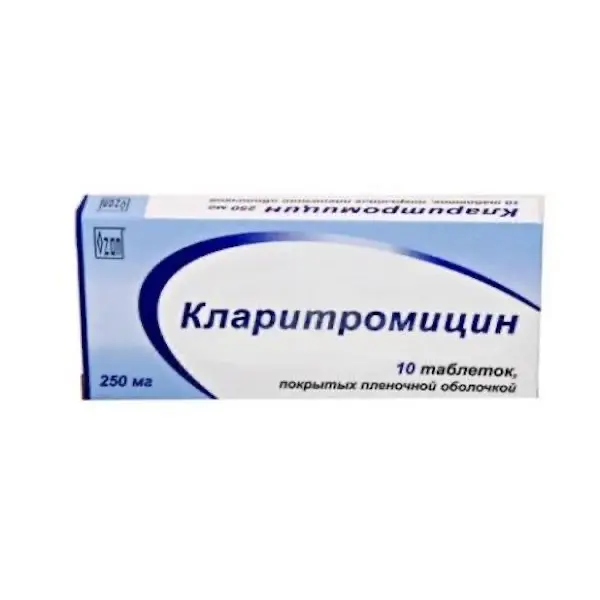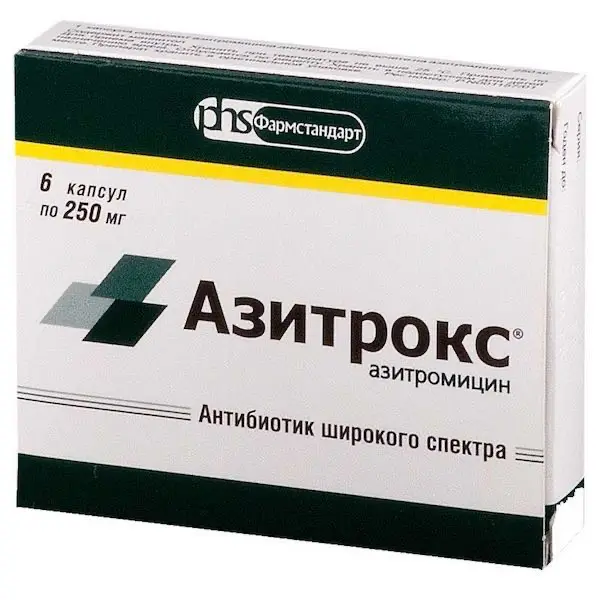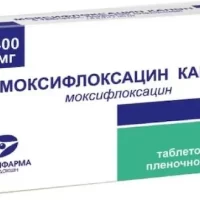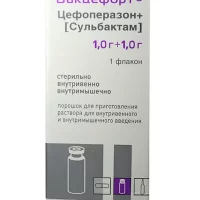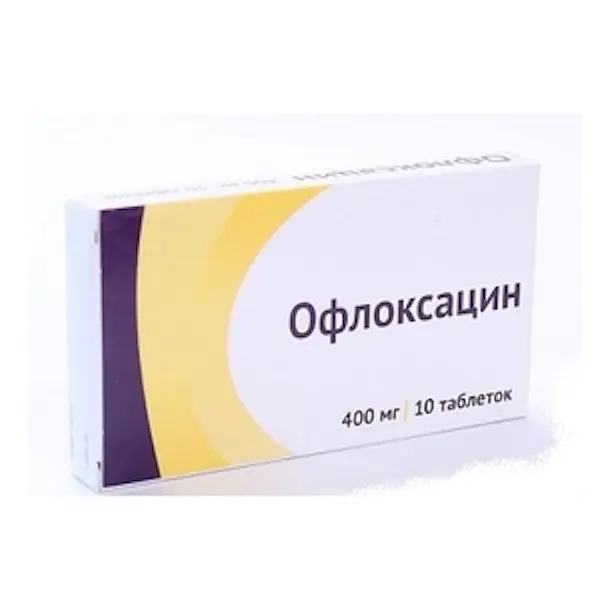Description
Clarithromycin Pharmacodynamics
Semi-synthetic bacteriostatic broad-spectrum macrolide antibiotic. Disrupts protein synthesis of microorganisms (binds to 50S ribosome subunit of the microbial cell). Acts on extra- and intracellularly located pathogens. Clarithromycin activity against most strains of the following microorganisms has been proven both in vitro and in clinical practice:
– Aerobic Gram-positive microorganisms: Staphylococcus aureus, Streptococcus pneumoniae, Streptococcus pyogenes, Listeria monocytogenes;
– aerobic gram-negative microorganisms: Haemophilus influenzae, Haemophilus parainfluenzae, Moraxella catarrhalis, Neisseria gonorrhoeae, Legionella pneumophila;
– Other microorganisms: Mycoplasma pneumoniae, Chlamydia pneumoniae;
– Mycobacteria: Mycobacterium leprae, Mycobacterium chelonae, Mycobacterium kansasii, Mycobacterium fortuitum; Mycobacterium avium complex (MAC) – complex including: Mycobacterium avium and Mycobacterium inlracellulare; Helicobacter pylori.
Beta-lactamases do not affect the activity of clarithromycin.
Enterobacteriaceae and Pseudomonas spp. as well as other non-lactose-fermenting Gram-negative bacteria are not sensitive to clarithromycin.
Clarithromycin activity in vitro:
– Aerobic Gram-positive microorganisms: Streptococcus agalactiae, Streptococci groups C, F, G, Streptococci group viridans;
– aerobic gram-negative microorganisms: Bordetella pertussis, Pasteurella multocida;
– anaerobic gram-positive microorganisms: Clostridium perfringens, Peptococcus niger, Propionibacterium acnes;
– anaerobic gram-negative microorganisms: Bacteroides melaninogenicus;
– spirochetes: Borrelia burgdorferi, Treponema pallidum;
– Campylobacter: Campylobacter jejuni.
The main metabolite of clarithromycin in humans is the microbiologically active metabolite 14-hydroxyclarithromycin (14(R)-clarithromycin). The microbiological activity of the metabolite is the same as that of the parent substance, or 1-2 times weaker against most microorganisms. The exception is H.influenzae, against which the effectiveness of the metabolite is twice as high. The starting substance and its main metabolite have either additive or synergistic effect against H.influenzae under in-vitro and in vivo conditions depending on the bacterial strain.
Most staphylococcal strains resistant to methicillin and oxacillin are resistant to clarithromycin.
Cross-resistance to clarithromycin and other macrolide antibiotics as well as to lincomycin and clindamycin may develop.
Indications
Infectious and inflammatory diseases caused by clarithromycin-sensitive microorganisms:
– Lower respiratory tract infections (including exacerbation of chronic bronchitis, community-acquired pneumonia);
– infections of the upper respiratory tract and ENT organs (including pharyngitis, tonsillitis, acute sinusitis, acute otitis media);
– uncomplicated skin and soft tissue infections (including folliculitis, subcutaneous tissue inflammation, rye);
– disseminated or localized mycobacterial infections caused by Mycobacterium avium and Mycobacterium intracellulare. Localized infections caused by Mycobacterium chelonae, Mycobacterium fortuitum and Mycobacterium kansasii;
– eradication of Helicobacter pylori and reduction of duodenal ulcer recurrence rate;
– Prevention of spread of infection caused by Mycobacterium avium complex (MAC) in HIV-infected patients with CD4 lymphocytes (T-helper lymphocytes) count not exceeding 100 per 1 mm3;
– odontogenic infections.
Contraindications
– Hypersensitivity to clarithromycin, other antibiotics of the macrolide group and other components of the drug;
– concomitant use of clarithromycin with the following drugs: astemizole, cisapride, pimozide, terfenadine, ergotamine, dihydroergotamine;
– concomitant use of simvastatin, lovastatin, midazolam for oral administration;
– concomitant administration of colchicine in patients with impaired renal or hepatic function;
– history of QT interval prolongation, ventricular arrhythmia or pirouette-type ventricular tachycardia;
– hypokalemia;
– cholestatic jaundice/hepatitis developed with clarithromycin (history);
– Severe hepatic failure concurrent with renal failure;
– porphyria;
– hypokalemia;
– Breast-feeding period;
– children under 12 years of age (taking into account the dosage form and dosage).
Dosage and administration
- Tablets are taken orally, regardless of meals.
- Usually adults and children over 12 years of age are prescribed 250 mg of clarithromycin 2 times a day. In more severe cases, the dose is increased to 500 mg twice a day.
- Usually the duration of treatment is from 5 to 14 days. Exceptions are community-acquired pneumonia and sinusitis, which require 6 to 14 days of treatment.
- In order to eradicate Helicobacter pylori in combination with other drugs:
- Combined treatment with three drugs
Clarithromycin 500 mg, lansoprazole 30 mg and amoxicillin 1000 mg, all medications 2 times a day, for 10 days; clarithromycin 500 mg, omeprazole 20 mg and amoxicillin 1000 mg, all medications 2 times a day, for 7-10 days; - Combined treatment with two drugs
Clarithromycin 500 mg 3 times daily, omeprazole 40 mg/day, for 14 days, with prescription of omeprazole for the next 14 days at a dose of 20-40 mg/day.
Clarithromycin 500 mg 3 times daily + lansoprazole 60 mg/day for 14 days.
Additional reduction in gastric acidity may be required for complete healing of the ulcer. - For odontogenic infections, the clarithromycin dose is 250 mg twice daily for 5 days.
Doses for treatment of mycobacterial infections other than tuberculosis: For mycobacterial infections, a clarithromycin dose of 500 mg 2 times daily is recommended. - Treatment of disseminated MAC infections in patients with AIDS should be continued as long as there is clinical and microbiological efficacy. Clarithromycin should be used in combination with other antimicrobials active against these pathogens. The duration of treatment of other non-tuberculous mycobacterial infections is determined by the physician.
- For prevention of infections caused by MAC: the recommended dose of clarithromycin for adults is 500 mg twice daily.
- Patients with renal insufficiency
Patients with creatinine clearance less than 30 ml/min are prescribed half the usual dose of clarithromycin, i.e. 250 mg once daily or, for more severe infections, 250 mg twice daily. Treatment of such patients is continued for no more than 14 days.

